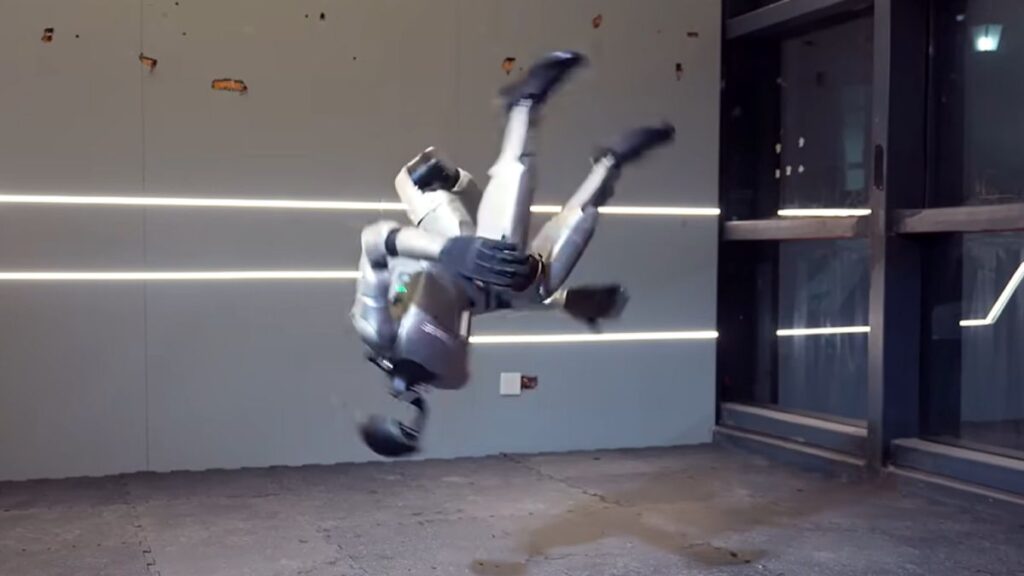Meet the G1: The World’s First Side-Flipping Humanoid Robot
In a stunning demonstration of engineering and artificial intelligence, scientists have revealed a humanoid robot capable of performing a complex side flip. This remarkable feat comes from the innovative minds at Unitree Robotics, who recently showcased their creation in a captivating video on YouTube.
A Leap into the Future
The star of the show, the G1 robot, exhibits a striking silver-grey exterior. With a slight crouch and an explosive leap, it deftly rotates sideways in mid-air, executing the side flip with precision. As it lands, the robot skillfully catches itself primarily with its left leg, stabilizing almost instantaneously as the other foot touches the ground. The performance is nothing short of mesmerizing, especially when viewed in slow motion, highlighting the G1’s remarkable balance and agility.
This isn’t the G1’s first rodeo; last year, it successfully conquered the backflip, and its latest acrobatic ability was made possible through upgrades to its artificial intelligence algorithms. Unitree representatives explained that the side flip was achieved using reinforcement learning, a technique that allows robots to learn by interacting with their environment—in this case, through acrobatic training.
What is Reinforcement Learning?
Reinforcement learning is a foundational approach used in AI, helping robots maneuver and function within the physical world. This technology is similar to what companies like Figure deploy in their bipedal robots, such as the Figure 02, enabling them to walk and run in a more human-like manner.
A Robotic Acrobat with More Than Just Flips
The G1 robot is not just an acrobat; it has demonstrated its capabilities in martial arts as well. During a compelling demonstration, the G1 successfully disarmed a baton-wielding opponent with a series of feints and a dramatic spinning kick, sending the baton flying.
Standing at just over 4.3 feet (1.3 meters) and weighing in at 77 pounds (35 kilograms), the G1’s lightweight and compact design make these agile maneuvers possible. Equipped with a 3D light-detecting and ranging (LIDAR) system and a depth camera, the robot boasts a 360-degree awareness of its surroundings. Most impressively, it features 23 degrees of freedom, allowing for a wide range of joint and movement possibilities.
Additionally, the robot can walk and run at speeds of up to 2 meters per second (about 4.5 miles per hour, or 7.2 kilometers per hour), opening up a host of potential applications.
The Future is Bright for Humanoid Robots
Unitree envisions a future where robots like the G1 will serve various roles, from assisting with household chores to participating in industrial operations or even aiding in dangerous rescue missions. With the rapid advancements in AI and robotics, the G1 stands as a testament to how far technology has come and where it may lead us.
As we witness these breakthroughs, the excitement around the potential of humanoid robots continues to grow. The G1 not only showcases the advancements in robotics but also opens doors to a future where such machines might seamlessly integrate into our daily lives.
The AI Buzz Hub team is excited to see where these breakthroughs take us. Want to stay in the loop on all things AI? Subscribe to our newsletter or share this article with your fellow enthusiasts.




